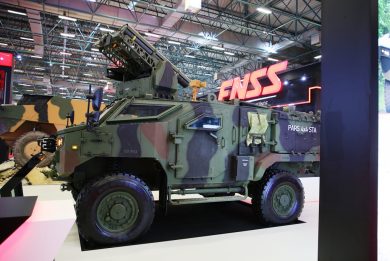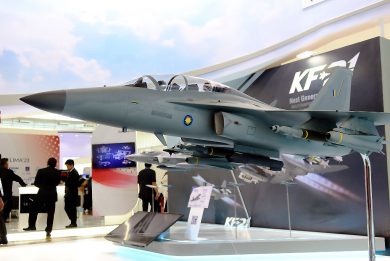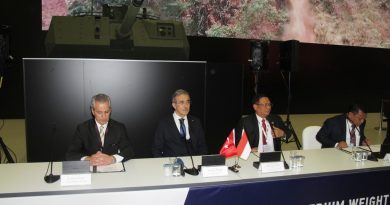DSA 2024 – Deftech exhibits the proof of concet vehicle of the ACV-300 life extension programme proposal for the Malaysian Army
At DSA Deftech, one of the biggest defence company in Malaysia, exhibited its proposal for the ACV-300 life extension programme (LEP), that will allow the Tentera Darat Malaysia, the Malaysian Army, to maintain these tracked vehicles in service for at least 15 more years. The ACV-300 LEP programme is being carried out in close cooperation between the Original Equipment Manufacturer, FNSS of Turkey, and Deftech
Although no firm decision has been taken yet by the Army, EDR On-Line understands that the Army should take a decision soon. These vehicles have been in service for over 20 years and definitely need refurbishment.
No modification were made to the powerpack, although both the engine, a Detroit Diesel 6V53T providing 300 hp, and the transmission, an Allison X200-4 with four forward and one reverse gears, were fully refurbished bringing them to zero hour. Some sensors were added, which allow the driver to see on the new Driver Vision Enhancement system numerous data that were not available in the past, such as rounds per minute, speed, fuel status and battery status. No modification were made on the protection, although the company does not exclude the adoption of a spall liner. This, together with the maintaining of the single-pin tracks, will allow the 14 tonnes tracked vehicle to maintain its swimming capability.
To improve crew safety and vehicle survivability a new generation fire suppression system that uses FM-200 gas in place of Freon; the system in the engine compartment provides a double shot, the same being for that in the cabin and troop compartment, personnel being also able to activate the fire suppression system manually. LED lighting replaced conventional one both externally and internally.
The firepower will be improved. Two options are proposed, the first retaining the FNSS one-man Sharpshooter stabilised turret, armed with a 25 mm cannon and a 7.62 mm coaxial machine gun, and upgrading it adding a new gunner’s sight, a thermal imager, both from Thales Defense & Security, a laser rangefinder, and a new fire control system. The second option is to replace the existing turret with the Saber unmanned turret, also from FNSS, which is already fitted with all those systems and can host a 12.7 machine gun or a 40 mm automatic grenade launcher as secondary armament.
The Adnan features four sets of four 76 mm grenade launchers at each corner of the vehicle, while 8 grenades are located on the turret, in two clusters of three plus one tubes each located at the rear sides of the turret. Deftech replaced the grenades fire control box with an upgraded one that allows to understand if the tubes are loaded or not, improving considerably survivability chances. The launchers are interfaced through the new Battle Management System (BMS) Light with the new Laser Warning Receiver, produced by Deftech, which allows smoke grenades to be launched automatically, semi-automatically or manually. The BMS also includes a Blue Force Tracking system. The whole vehicle wiring has been replaced, allowing among other the installation of a 360° situational awareness system, front and rear sensors being both daylight and thermal. The radio suite has also been replaced by new comms in the VHF and HF bands, all software defined.
These allow the ACV-300 Adnan to swap data with other Malaysian Army vehicles, such as the AV-8 Gempita 8×8 armoured wheeled combat vehicle, as well as with the SR-10 VTOL unmanned air system. Electrically powered, it has a 2.2 metres wingspan and in horizontal flight is propulsed by a two-blade propeller activated by a small 1.34 hp petrol engine; for vertical take-off and landing the lift is provided by four rotors activated by electric motors. The UAS has an endurance of 90 minutes, a range of 20 km, and a maximum speed of 40 knots. Its SR-10 take-off mass is 9 kg, and its payload is a gimballed optronic sensor installed in the nose. It will represent the forward eyes of the Adnan.
In August 2023 the ACV-300 demonstrator has been tested on and off road, logging over 700 km, and test fired both static and on the move. EDR On-Line understands the budget is allocated, the company awaiting the updated requirement document to finalise the proposal, that will then lead to the selection of one of the two contenders. While the programme aims initially at upgrading only the ACV-300 in the AIFV configuration, which can carry the driver, commander, gunner and eight dismounts, the programme might extend to the remaining versions of the ACV-300 in service with the forces.
Photos by P.Valpolini








